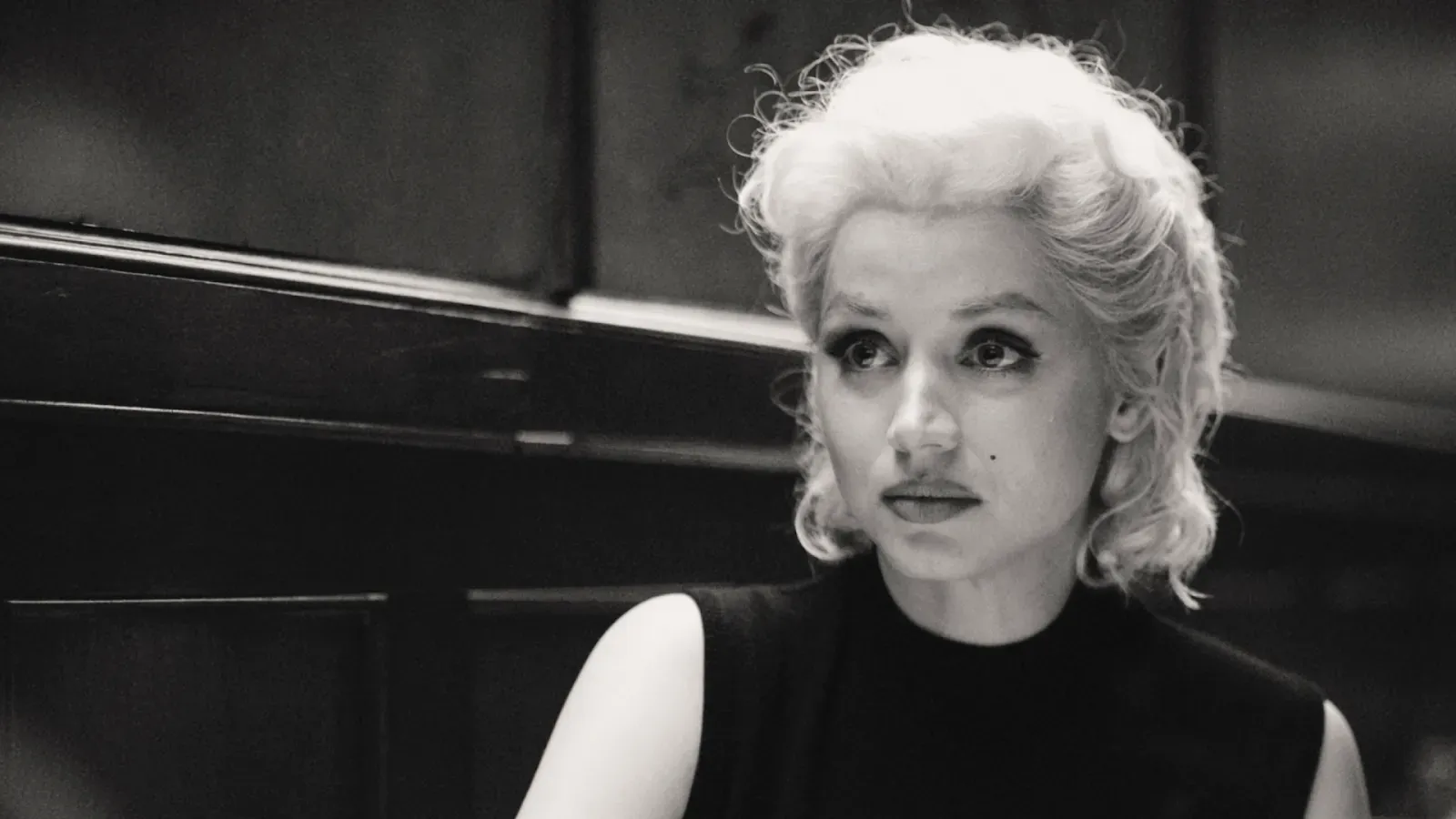 |
| Netflix |
For starters, in real life, there is no historical evidence that John F. Kennedy sexually assaulted Marilyn Monroe, per Inside Edition. “Blonde” and its trouble with the truth does not end there. It is so unbothered by the facts it does not even get the upsetting contents of the letter Monroe found on her then-husband -- Arthur Miller’s desk correct. Why get something so simple - wrong? Consistency?
“Blonde” certainly stays the course. There are also discrepancies about whether Monroe ever had an abortion, per E! News. Let alone one as a result of congress with the President of the United States. Making matters more potent, “Blonde” attempts to blame the alleged abortions for helping fuel Marilyn Monroe’s emotional downward spiral. It is a rather explosive claim.
What can be surmised is that Monroe suffered a tragic tailspin that would eventually culminate in her untimely death at the tender age of 36. As “Blonde” builds towards the sad and inevitable end of her haunted and all-too-brief life, it stings just as harshly as if viewers never saw it coming.
A Legend Lost
While so much of writer-director Andrew Dominick’s choices are frustrating, how he frames Marilyn/Norma’s final moments are beyond poignant. It is that scene that breathes with the most accuracy despite even its artistic flourishes. Dominick’s choices are strong, if a bit strange, yet never detract from Norma Jeane’s descent.
In its last act, “Blonde” captures a fading Norma reaching out to embrace her little platinum dog, whose arrival in the narrative comes out of nowhere. The precious pup provides a startling final note to Norma’s story as told by the movie. In its version, Norma had one true and confused friend with her at the end.
It is a moving moment, not for the faint of heart, and not advised for those battling any depression to witness. Shockingly, Netflix does not issue a warning before “Blonde” begins so viewers can take their and their co-viewers’ mental health under advisement. This is one of the times it is incredibly needed.
For all its trouble with the truth, how “Blonde” presents Norma/Marilyn’s tragic end is authentically and tastefully handled. It is presented as a blur of pill taking and the regret that often trails a decision Norma makes after it is too late. At least, that is my interpretation of what “Blonde” makes of Norma’s sad ending.
The Truth About Lies
It is a shame to have so many lies in a movie about a woman whose life was dramatic and traumatic enough without needing any “artistic license” to fill in non-existent cavernous areas. Artistic license is simply a fancy term popularized by Hollywood to spin gilded defamation. A lie is a lie, no matter the fancy phrasing.
Backed by an exquisitely tender, earnest, and cutting performance by its star, Ana de Armas, the Netflix drama pours bleach into nearly every wound imaginable. De Armas breathes every ounce of fragile breath into Norma Jeane, who “Blonde” makes clear is the real McCoy behind her famous alter ego. It asserts Marilyn Monroe is a persona no more tangible than a Disney princess.
The way “Blonde” is conjured will be a turn-off to many in the mainstream audience. This is not a straightforward take like “The Crown.” Writer-director Andrew Dominik’s movie is inexplicably shot predominantly in 4:3 with rare moments of widescreen. If that were not avant-garde enough, it also alternates between black and white and being in color. Why? The artistic translation and reasoning for such bizarre choices are impossible to follow.
Fancy For Whose Sake?
Much like the lack of historical accuracy, the answer seems to be “because they could.” There is no getting around it. “Blonde” is mainly concerned about landing an Oscar. For all of its artsy flourishes, “Blonde” is well-done. At two hours and forty-seven minutes, it holds your attention through every harrowing second, which is all of them.
Andrew Dominik may have gone overboard and alienated a lot of viewers in the process with a lot of dicey decisions (dice are also black and white). Nevertheless, it is still impressively daring. The piece’s heart remains the haunted soul of a girl trying to make her biggest dream come true. Find someone to love her in return. To convey all of that is the outstanding Ana de Armas.
If anyone is worthy of recognition when awards season gets underway, it is Ana de Armas. Her turn is absolutely heartbreaking, riveting, and memorable. In one of her many shining moments, de Armas’ Marilyn auditions for “Don’t Bother to Knock” – a tremendous work by the real Monroe. They called the time when Monroe worked – the “golden era of Hollywood.” Monroe glittered and gave them gold.
As much as she suffered in her short life, I wish that a big Hollywood movie would acknowledge Marilyn Monroe as a heroine in her story. Monroe had beauty and brains and accomplished extraordinary things. She moved the dial forward for women, including fellow actresses, and became an icon. “Blonde” will undoubtedly lend to her legend, yet I cannot help feeling she is being used just as she was in life.
Comments
Post a Comment